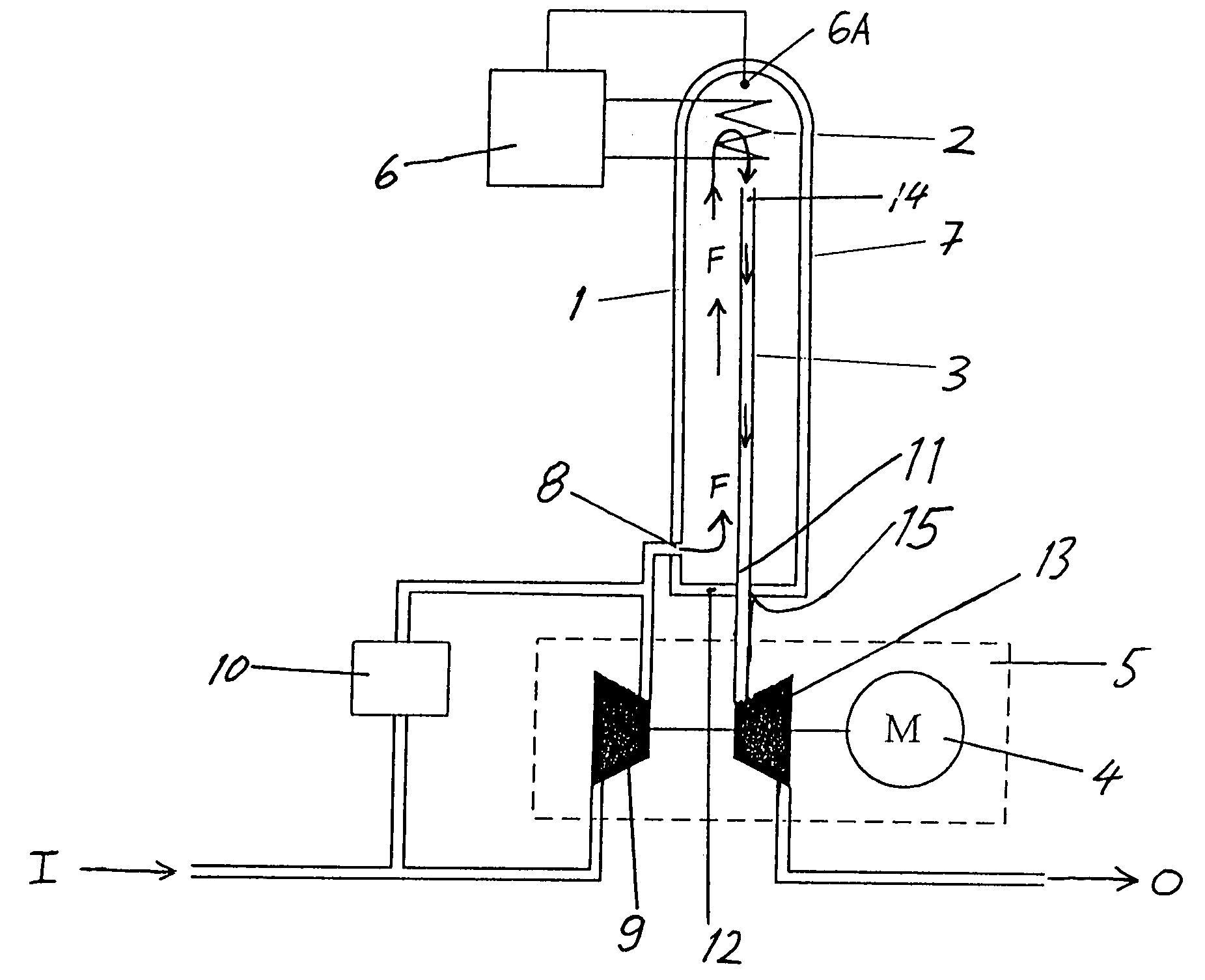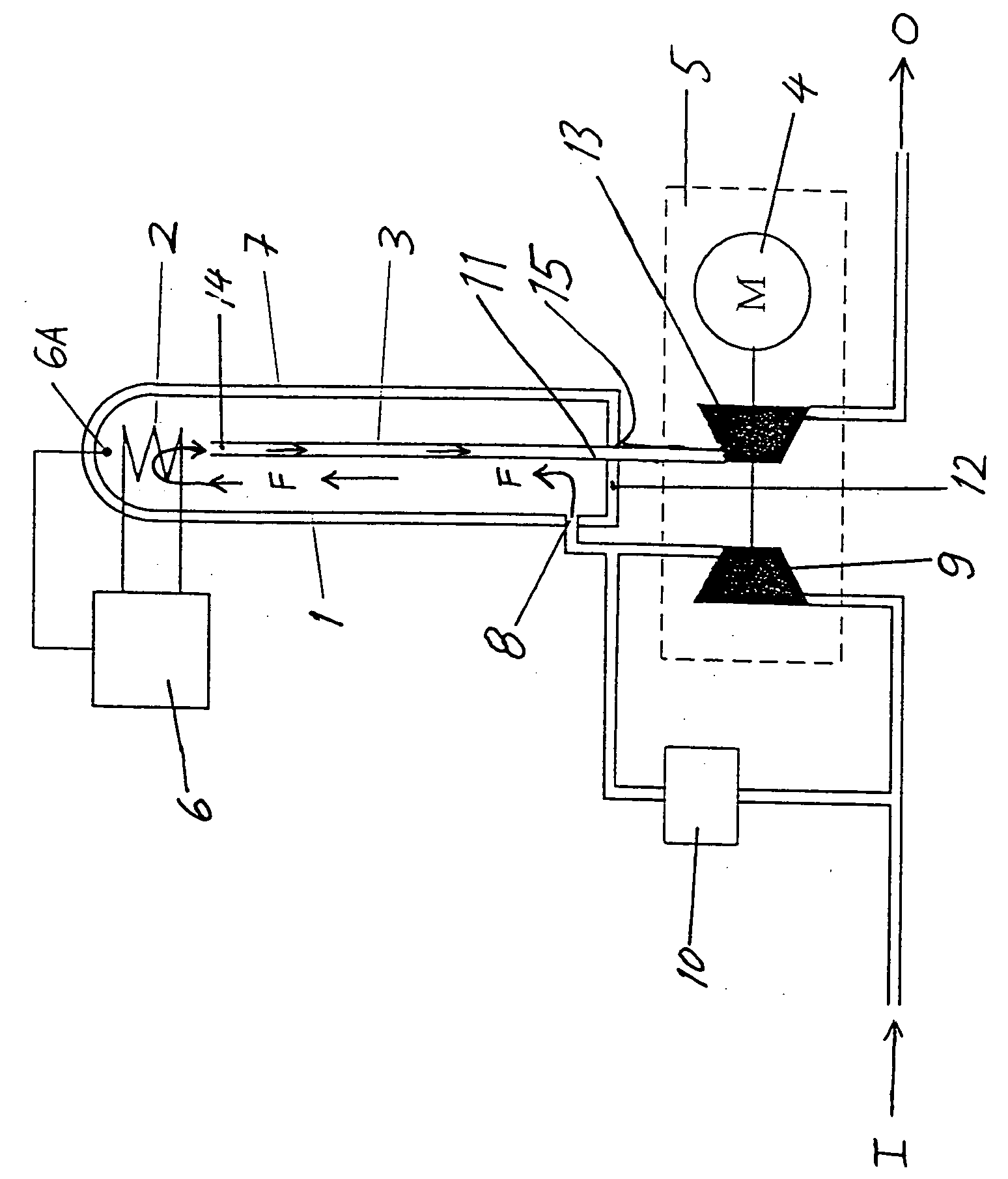Apparatus and method for thermal sterilization of liquids
a technology of liquid sterilization and apparatus, applied in the direction of lavatory sanitory, water/sludge/sewage treatment, specific water treatment objectives, etc., can solve the problems of inability to achieve a sufficiently long dwell time and high sterilization temperature, and achieve the most temperature-resistant microbials. the most resistant to oxidation and other problems
- Summary
- Abstract
- Description
- Claims
- Application Information
AI Technical Summary
Benefits of technology
Problems solved by technology
Method used
Image
Examples
Embodiment Construction
[0013] The exemplary apparatus according to the invention shown schematically in the single drawing FIGURE comprises a pressure vessel 1, a regulatable heater 2, preferably an electric resistance heater 2, arranged in a heating zone within the pressure vessel 1, a counterflow heat exchanger 3 arranged within the pressure vessel 1, and a pressurizing-depressurizing module or compression-expansion module 5. A regulator 6 is connected to the heater 2 and receives a temperature signal from a temperature sensor 6A arranged in the heating zone within the pressure vessel 1. Thereby, the regulator 6 applies e.g. electrical energy to the heater 2 in a regulated manner dependent on the temperature signal provided by the temperature sensor 6A, so as to regulate the operation of the heater 2 to achieve the required treatment temperature in the heating zone. The pressure vessel 1 is preferably surrounded and enclosed by any suitable conventionally known thermal insulation 1, and preferably has a...
PUM
| Property | Measurement | Unit |
|---|---|---|
| temperature | aaaaa | aaaaa |
| pressure | aaaaa | aaaaa |
| temperature | aaaaa | aaaaa |
Abstract
Description
Claims
Application Information
 Login to View More
Login to View More - R&D
- Intellectual Property
- Life Sciences
- Materials
- Tech Scout
- Unparalleled Data Quality
- Higher Quality Content
- 60% Fewer Hallucinations
Browse by: Latest US Patents, China's latest patents, Technical Efficacy Thesaurus, Application Domain, Technology Topic, Popular Technical Reports.
© 2025 PatSnap. All rights reserved.Legal|Privacy policy|Modern Slavery Act Transparency Statement|Sitemap|About US| Contact US: help@patsnap.com


